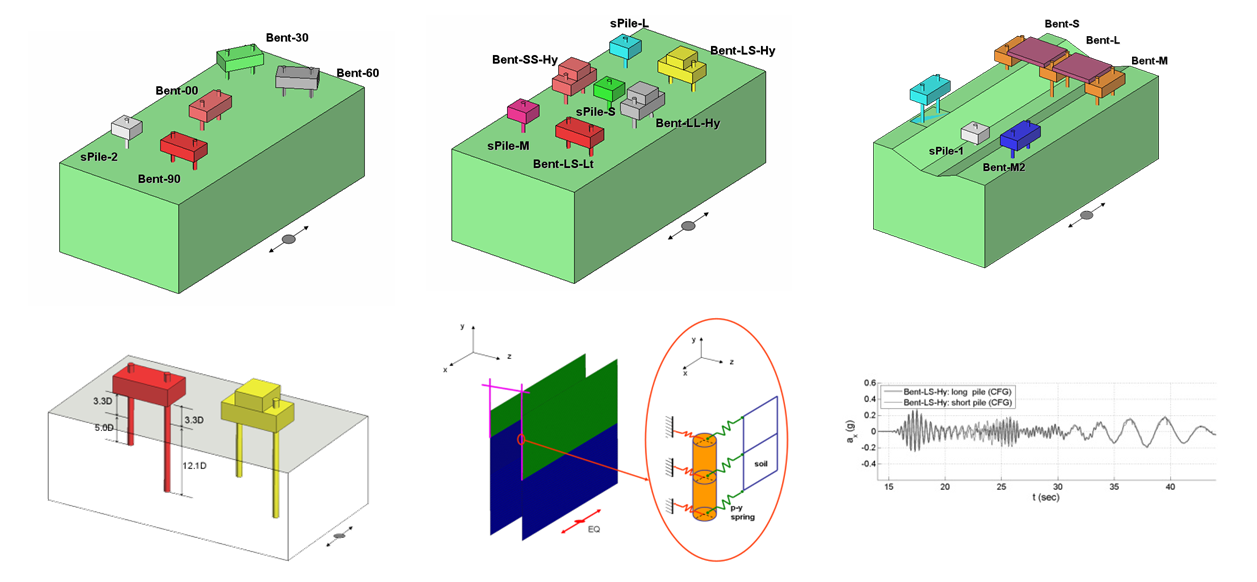Research
Physical and Numerical Modeling of Bridge Structures
Participants: Hyung-Suk Shin, Steven L. Kramer and Pedro Arduino
The seismic response of bridges and other structures, particularly those supported by drilled shafts, can be strongly influenced by soil-pile-structure interaction (SPSI). SPSI can be complicated and influenced by many factors including ground motion intensity, directions of shaking, various structural configurations including clear height above the ground surface, embedment length, and pile head rotational constraints. To evaluate the seismic SPSI in a bridge and bridge components, a series of centrifuge tests were performed in the U.C. Davis centrifuge facility in collaboration with researchers from that institution (Ilankatharan and Kutter 2005). The tests included: i) a two-span bridge with different clear column heights, ii) several two-column bents oriented at different angles with respect to the direction of primary shaking , and iii) several bents and single piles with different pile embedment lengths and masses. These models were subjected to various earthquake motions with different intensities and frequency contents to trigger different levels of system nonlinearity. The Open System for Earthquake Engineering Simulation (OpenSees) framework was used to simulate the centrifuge response. To represent the centrifuge structures, two- and three-dimensional structural models were attached to 2-D shear beam soil columns and conventional interface springs.

Contact
Pedro Arduino
132 I More Hall, Department of Civil & Environmental Engineering,
University of Washington, Seattle, WA, 98195-2700. Tel: 206-543-6777, e-mail: parduino@uw.edu